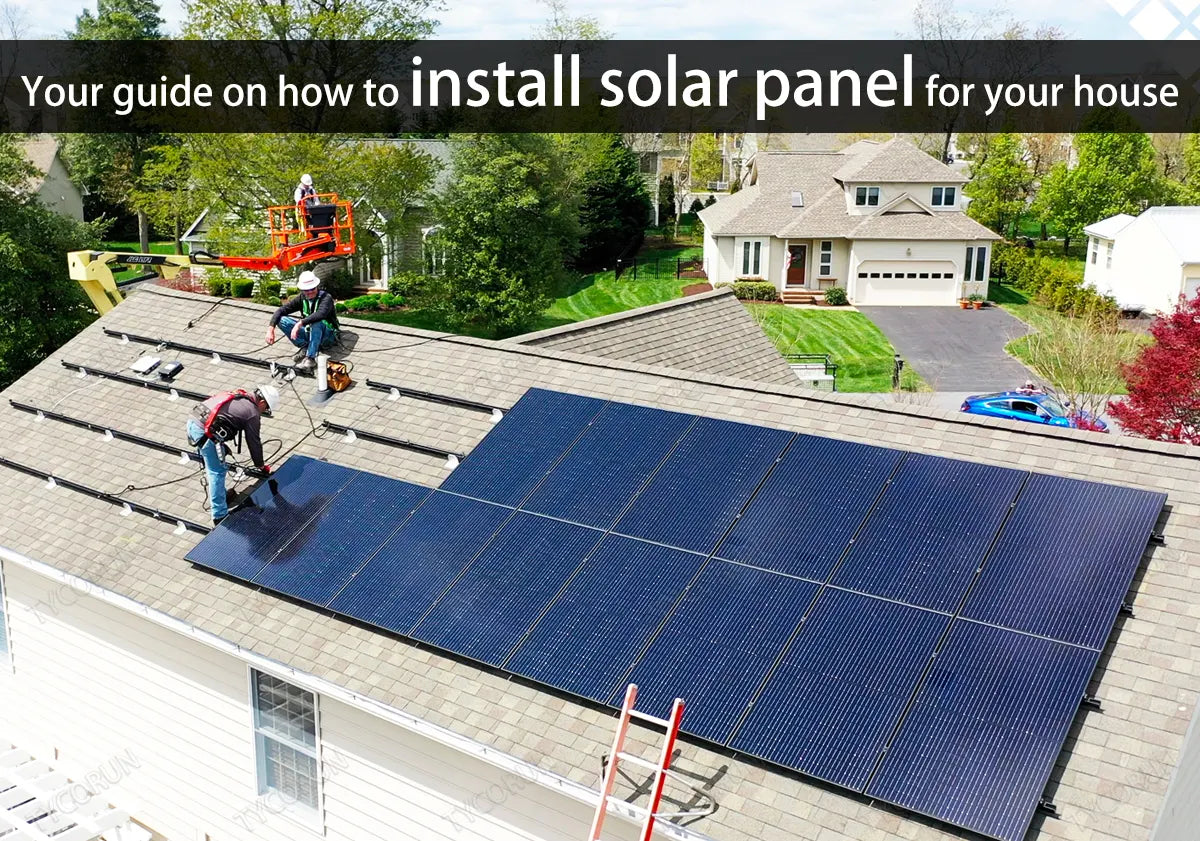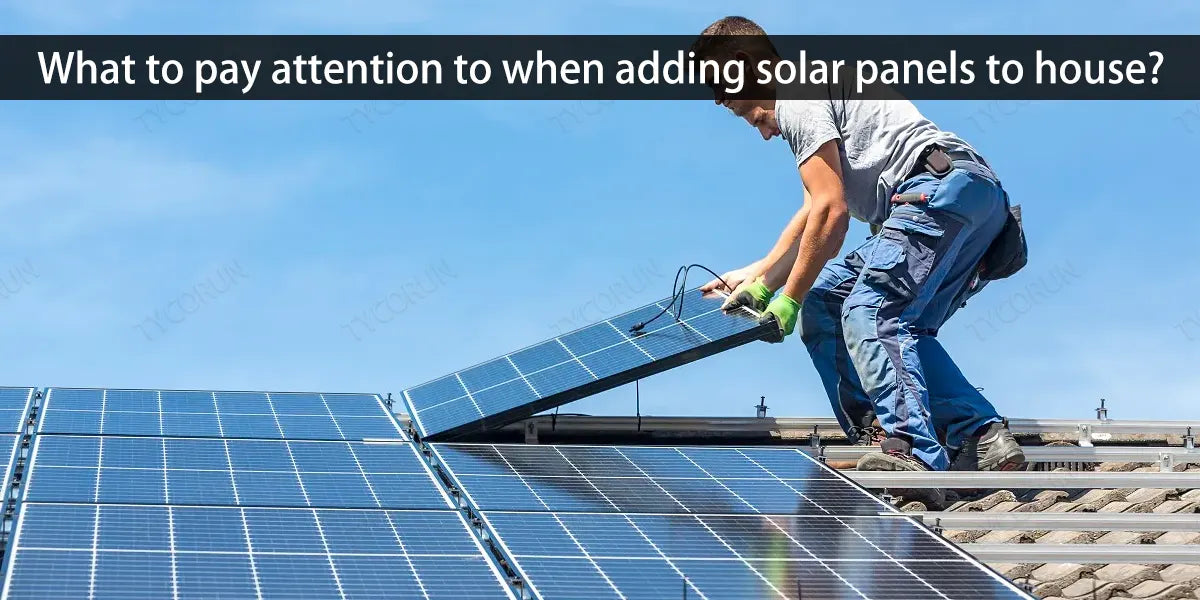
As a renewable energy source, photovoltaic plays an immeasurable role in our lives. It has no pollution, no noise, and no radiation, as long as the sun rises, it will bring us a steady stream of electricity.
Many users hope to install solar panel on their roof, so that they can enjoy green energy and make good profits at the same time! But we would like to remind you that not all roofs can be installed with distributed photovoltaics. Before installation, we can first go for the following points to understand how to install solar panel correctly.
Main content:
1. Preparation before you install solar panel
The process to install solar panel system includes foundation installation, bracket installation, component installation, inverter and other electrical equipment installation, connection line installation, grid access system and metering device installation. Before actually starting the process to install solar panel, the most important thing is to select suitable photovoltaic modules.
Choose photovoltaic modules:
Different types and specifications of photovoltaic modules can be selected according to the specific conditions of the site to install solar panel. The effective utilization area of the installation site determines the size of the modules. If you want to install a larger capacity per unit area, you can choose high-efficiency modules.
Components with different frame colors can also be selected according to the appearance of the building, and the connector length of the component can be determined according to the series and parallel wiring methods on site. The selection of components requires comprehensive consideration of factors such as installation area, installed capacity, and cost.
Generally speaking, you should choose component products with good reputation, good quality, certification (with fire protection grade), and good warranty and after-sales service. In terms of color, you can choose one that is consistent with or similar to the color of the building.
For light transmission, we must consider the building's light requirements, which should not only meet the indoor light demand and avoid secondary lighting, but also make full use of the building space and area, reasonably select the size and shape, and use professional technology design.

2. Things to consider before adding solar panels to house
Should I consider the influence of wind speed in the design and installation of solar panels? When install solar panel on the roof of a building, the load on the roof of the building must be considered, as well as the impact on the safety of the solar panel caused by the turbulence and speed changes generated by the airflow after encountering the building.
Only by fully considering local wind conditions, landforms and the relative position of the building where you are planning to install solar panel, can the safety of the solar panel and surrounding property be ensured.
Does the orientation of the solar panel have any impact on the power generation system? Since the main factor affecting photovoltaic power generation is the amount of sunlight, the modules should be installed in the direction with the most sunlight. Different angles of install solar panel also have an impact on the power generation efficiency of photovoltaic modules.
The power generation efficiency of the home solar power system batteries, mostly LFP battery, in different orientations is different in different locations and under different climate conditions. For further information of the best batteries, you can check battery stores near me.

3. What to pay attention to when adding solar panels to house?
As the core component of the photovoltaic system, the inverter directly affects the system power generation. The following points should be noted:
- Since the connection between the inverter and the power grid changes the impedance characteristics of the inverter, it is easy to cause the inverter to resonate itself, which mostly occurs when multiple inverters are connected in parallel;
- After the 2000 watt inverter or 3000 watt solar inverter is installed, there must be professional personnel to re-inspect it, mark it and record it;
- The connection between the inverter ventilation duct and the external air duct should be softly connected to prevent mechanical vibration from causing mechanical noise;
- When the inverter has increased noise or smells, you should pay more attention and check the internal fault of the inverter, to find out the cause and deal with it as appropriate;
- During installation and debugging, pay attention to the detection of inverter leakage, grounding, and phase sequence, etc.

In addition, since adding solar panels to house will increase the load-bearing and load of the roof, the following factors need to be specially considered:
- Whether the bearing capacity and load of the building roof can meet the design requirements of the photovoltaic system should be reviewed by the original designing team;
- Whether the attachments on the building roof (such as air vents, elevator rooms) and walls block the sunlight from irradiating the photovoltaic modules;
- Whether the building is surrounded by other tall buildings, trees, poles and other external factors;
- The photovoltaic system is higher than the building roof and cannot affect the lighting conditions of adjacent buildings;
- Obvious warning signs should be set up in the solar panel system area to prevent non-professionals from entering the rooftop solar panel area alone;
- When arranging solar panels, consideration should be given to setting aside access for maintenance and repairs, while ensuring the smooth flow of safe evacuation channels on the roof;
- The foundation of the photovoltaic module bracket must not affect the rainwater drainage system of the roof, and at the same time, it must not damage the thermal insulation and waterproof performance of the roof;
- Do not install solar panel across the deformation joints of the building;
- There should be a certain ventilation and cooling space between the photovoltaic modules and the roof to meet the operating temperature requirements of the modules;
- It is also necessary to take into account the aesthetics of photovoltaic buildings.

4. How to connect the solar panels to the electrical system in the house?
The circuits of the photovoltaic system are divided into DC parts and AC parts, and these two parts of the circuits need to be wired separately. The AC part needs to be connected to the power grid, and the grid connection point is located at the user-side meter, and is ultimately connected to the existing electrical system in the user's home.
As long as there is sunlight, the photovoltaic modules will generate electricity, and due to the accumulation of series voltage, the corresponding voltage to ground will also be high. Therefore, the installation process should strictly comply with the installation instructions provided by the system supplier and be completed by professional installers.
The wiring part of the equipment is installed using professional connectors, and the protection level is IP65. The electrical equipment is also protected by air switches to prevent leakage current from causing personal injury. At the same time, pay attention to protection from rain and snow.
Specific requirements are as follows:
- When you install solar panel components, please use insulated tools and do not wear metal jewelry;
- Do not disconnect electrical connections under load;
- The connector must be kept dry and clean. Do not insert other metal objects into the connector or make electrical connections in any other way;
- Do not touch or operate photovoltaic modules with broken glass, detached frames, and damaged backsheets unless the modules are electrically disconnected and you are wearing personal protective equipment;
- If the component is wet, do not touch the component except when cleaning the component, but you need to follow the requirements of the component cleaning manual;
- Do not touch wet connectors without wearing personal protective equipment or rubber gloves.
Related posts: 12 volt 100ah deep cycle lithium battery, 21700 battery, Top 5 solar microinverter companies in the world